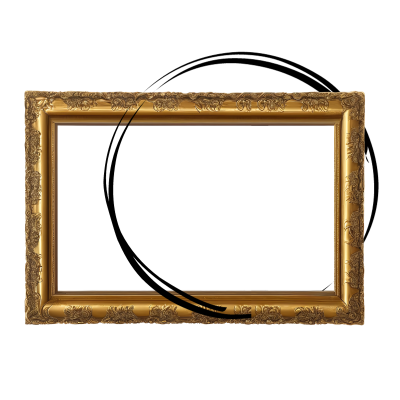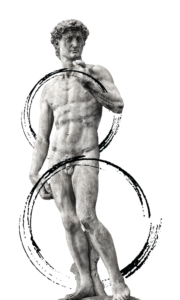Accademia Gallery
The Accademia Gallery, also known as Galleria dell’Accademia, is home to an exquisite collection of world-renowned art. This iconic destination in Florence, Italy, is a must-visit for art enthusiasts and historians alike, offering insight into centuries of artistic endeavour and cultural evolution.
Feeling Premium? Check the Accademia Skip the Line with Host

Accademia Gallery Opening Hours
The opening hours of the Accademia Gallery are as follows:
- Tuesday to Sunday: 8:15 AM – 6:50 PM (last admission 6:20 PM)
- Closed on Mondays, New Year’s Day, May 1st and Christmas Day.
It is recommended that visitors purchase tickets in advance to avoid long queues and ensure a smooth entry into the gallery.
Reasons to Visit Accademia Gallery in Florence
The Accademia Gallery, or Galleria dell’Accademia, is a veritable treasure trove of artistic marvels, drawing in millions of visitors each year.
- Home to Michelangelo’s ‘David’: Undoubtedly, a key attraction of the Accademia Gallery is the iconic statue of David by Michelangelo. This monumental masterpiece is considered one of the greatest works of the Italian Renaissance.
- Witness the Evolution of Art: The gallery showcases an array of fine arts from different periods, allowing visitors to observe the progression of artistic styles. From the Gothic period to the Renaissance, each room unfolds another chapter of artistic evolution.
- Offers Insight into the Artistic Heritage of Florence: As Florence is synonymous with the Renaissance, a visit to the Accademia Gallery provides an unrivalled opportunity to dive into the heart of this influential period and its fine arts.
- A Collection of Musical Instruments: In addition to its extensive art collection, the gallery also houses an array of historical musical instruments. This unique collection offers a fascinating insight into the craftsmanship and evolution of musical instruments over the centuries.
- Skip-the-line Access: With skip-the-line tickets, you can bypass the queues and dive straight into exploring the myriad works on display.

Besides Michelangelo, the Accademia Gallery or Galleria dell’Accademia hosts an impressive array of artworks from a variety of renowned artists, spanning different periods and styles. Here are some notable contributors to the gallery’s illustrious collection:
- Giovanni da Milano: A renowned Italian painter, da Milano’s works represent the Gothic style, enriching the gallery’s diversity of art forms.
- Domenico Ghirlandaio: A prominent Florentine painter from the early Renaissance period, Ghirlandaio’s works add an essential touch to the gallery.
- Andrea Orcagna: An accomplished painter, sculptor, and architect of the mid-14th century, Orcagna’s works provide a glimpse into the artistic styles of the time.
- Giovanni Santi: Known as the father of the legendary painter Raphael, Santi’s works add a sense of historical depth to the gallery’s collection.
- Alessandro Allori: A significant painter of the late Mannerist Florentine school, Allori’s artworks bring a unique perspective to the gallery’s collection.
- Baccio Bandinelli: Bandinelli’s sculptures and drawings add a three-dimensional aspect to the gallery’s diverse collection.
- Paolo Uccello: Famous for his pioneering work on visual perspective in art, Uccello’s contributions add a unique touch to the gallery’s collection.
- Giambologna: A Flemish sculptor based in Italy, his works are considered some of the finest examples of the mannerist style in sculpture.
Together, these artists’ works create a rich tapestry of artistic expression at the Accademia Gallery, enabling visitors to delve into the multitude of styles and techniques that have shaped the course of art history.

Secure your Tickets now!
In affiliation with

Touristic Highlights
- Impressive Scale: Standing at a staggering 5.17 meters (17 feet), the ‘David’ is a testament to Michelangelo’s exceptional skill in carving on such a monumental scale.
- Incredible Detail: Visitors are often struck by the remarkable detail of the statue, from the finely chiseled muscles and veins to the intense gaze on David’s face.
- Viewing Experience: The Accademia Gallery presents the ‘David’ under a skylight, which was specifically designed to highlight the statue’s intricate details and give it a three-dimensional feel.
- Replica in Original Location: A replica of ‘David’ now stands in Piazza della Signoria at the original location of the statue, offering visitors a chance to appreciate the statue in its historical context.
Exploring the ‘David’ allows visitors to the Accademia Gallery to encounter a showpiece of Renaissance artistry and understand the profound influence of Michelangelo’s work on subsequent generations of artists
Where is Accademia Gallery Museum and how to get there
The Accademia Gallery is located at Via Ricasoli, 58/60, in the heart of Florence.
By Public Transport
- Bus: The closest bus stop is ‘Arazzieri’, served by lines C1 and C2.
- Tram: The nearest tram stop is ‘Stazione Santa Maria Novella’, served by lines T1 and T2.
- Train: The closest train station is ‘Firenze Santa Maria Novella’, located about a 15-minute walk from the gallery.
By Car
There are limited parking options near the Accademia Gallery, so it is recommended to use public transport or a taxi service if you’re arriving by car. **If you do choose to drive, the gallery is located about 15 minutes from the city centre and can be reached via Viale Filippo Strozzi and Via degli Arazzieri.
David by Michelangelo - A Historical Masterpiece
 Michelangelo’s ‘David’ is undoubtedly the crown jewel and main attraction of the Accademia Gallery. This emblematic statue, carved from a single block of marble between 1501 and 1504, stands as one of the greatest masterpieces of the Renaissance, embodying the ideals of beauty, strength, and youthful vigor that characterized the period.
Michelangelo’s ‘David’ is undoubtedly the crown jewel and main attraction of the Accademia Gallery. This emblematic statue, carved from a single block of marble between 1501 and 1504, stands as one of the greatest masterpieces of the Renaissance, embodying the ideals of beauty, strength, and youthful vigor that characterized the period.
Historical Significance
- Influence of Classical Art: Michelangelo’s ‘David’ draws inspiration from ancient Greek and Roman sculptures, particularly in its lifelike proportions and realistic detailing, marking a significant shift from the less naturalistic figures of the Gothic period.
- Symbol of Florence: The statue was originally placed in Piazza della Signoria, the political heart of Florence, as a symbol of the city’s strength and resilience during a time of political turbulence.
Michelangelo Museum in Accademia Gallery
The Accademia Gallery houses one of the most impressive collections of Michelangelo’s works in the world. Fondly referred to as the Michelangelo Museum, this section of the gallery is home to the iconic sculpture of ‘David’, which has become synonymous with the city of Florence. ‘David’ is an exemplary display of Michelangelo’s mastery over the human anatomy and his ability to imbue life into marble.
Also showcased in this section are the unfinished ‘Prisoners’ or ‘Slaves’, a group of sculptures that were intended for the tomb of Pope Julius II. These statues provide a unique insight into Michelangelo’s sculpting process, revealing how he ‘freed’ figures from the marble blocks. The ‘Prisoners’ are a testament to the artist’s talent and his philosophy of the captive image.
This section of the Accademia Gallery also houses Michelangelo’s ‘Saint Matthew’, another unfinished sculpture that demonstrates the artist’s transition from the initial concept sketch to the final piece. The display of this artwork adds depth to the exhibit, allowing visitors to truly appreciate Michelangelo’s genius and artistic journey.
As visitors traverse the Michelangelo Museum, they encounter not just his monumental works, but also a deeper understanding of Michelangelo as an artist, his creative process, and his significant contribution to the Renaissance period. Indeed, a visit to the Accademia Gallery offers an unparalleled encounter with the artistry and genius of Michelangelo.
Brief History of the Accademia Gallery
The Accademia Gallery, or Galleria dell’Accademia, was established in 1784 by the Grand Duke Peter Leopold of Lorraine with the aim of providing a teaching facility for the students of the Academy of Fine Arts. The Duke intended for students to study and draw inspiration from the grand masterpieces that were housed within the gallery. This strategic location in the heart of Florence has provided an incredible learning environment, placing the students in close proximity to priceless works of art.
In its early years, the gallery primarily showcased paintings and antique sculptures that were owned by the Duke. However, its collection rapidly expanded with the closure of many religious institutions in the late 18th and early 19th centuries, which led to an influx of numerous artworks and statues. Of particular significance was the relocation of Michelangelo’s ‘David’ from Piazza della Signoria to the Accademia Gallery in 1873 to protect it from damage, transforming the gallery into the primary custodian of Michelangelo’s masterpieces in Florence.
Throughout its history, the Accademia Gallery has undergone several renovations and reorganisations to better accommodate its growing collection and to enhance the visitor experience. Despite these changes, the gallery continues to uphold its initial purpose as a place of learning and inspiration, bearing witness to the evolving trends in art and preserving a crucial piece of Italy’s rich cultural and artistic heritage.
Frequently asked Questions about Accademia Gallery
What is the Accademia Gallery and why should it be on my Florence itinerary?
The Accademia Gallery is a top-tier museum in Florence, Italy, renowned for housing Michelangelo’s sculpture “David”, one of the most famous works of art in the world. Besides “David”, the gallery also showcases a significant collection of Renaissance paintings, making it an essential stop for art enthusiasts visiting Florence.
How can I get tickets to the Accademia Gallery?
You can purchase tickets to the Accademia Gallery via the official website or from trusted travel platforms online. Buying your tickets online in advance is highly recommended as it allows you to bypass the often lengthy queues and guarantees entry, especially during peak tourist season. Tickets can also be bought on-site at the ticket office.
What are the different types of tickets for the Accademia Gallery and their cost?
The standard full-price ticket for the Accademia Gallery typically costs around €12. There are reduced price tickets for EU citizens aged between 18 and 25. Admission is free for children under 18. There may be additional fees for temporary exhibitions. For the most accurate pricing information, check the official website.
What are the transportation options to reach the Accademia Gallery?
The Accademia Gallery is located in central Florence, making it easily accessible by public transportation. City buses have stops near the gallery, or if you prefer, taxis and rideshare services are readily available. If you’re staying in central Florence, the gallery is within walking distance from many hotels and landmarks.
What’s the best time to visit the Accademia Gallery?
To avoid crowds, it’s best to visit the Accademia Gallery early in the morning or in the late afternoon. Weekdays are usually less crowded than weekends. Bear in mind that the gallery is closed on Mondays. Always consult the official website for up-to-date opening hours and any changes due to special events or holidays.
Are Accademia Gallery tours worth it>
Apart from exploring the galleries on your own, there are also guided tours available for visitors to the Accademia Gallery. These tours offer a more in-depth and educational experience of the gallery’s history, artwork, and artists. Guides provide valuable insights and interpretations of the masterpieces on display, making it an enriching and informative visit.
Further Resources
For more detailed information about the Accademia Gallery and the masterpieces it houses, including the renowned ‘David’ by Michelangelo, visit the official website of the Accademia Gallery.
For a more in-depth understanding of Michelangelo’s ‘David’, its historical context and its influence, The Khan Academy provides a comprehensive overview.
For practical information on opening hours, ticket prices, and how to reach the Accademia Gallery, consider visiting Discover Tuscany, a reliable resource for travellers to the region.
To explore further about the history of the Accademia Gallery and its role in Italian art education, refer to Florence Inferno.
